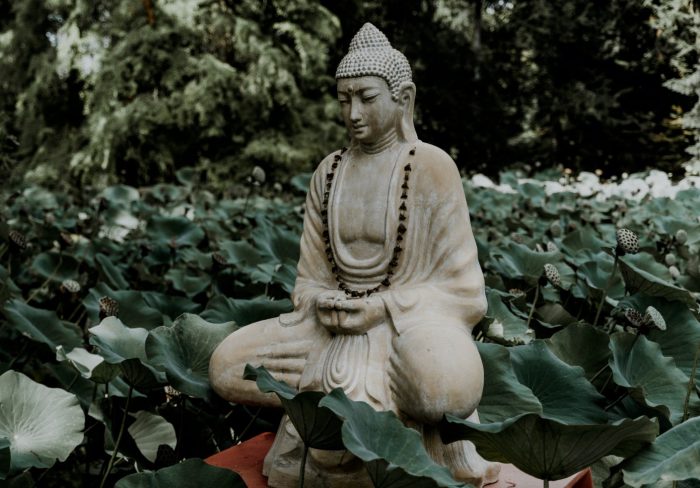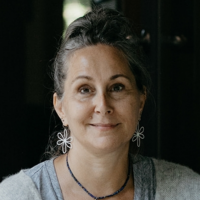We say we want to be fully present to experience every breath or every step, but within moments, we get distracted by a thought, a sound, or a feeling.
Even when we set aside time to meditate, our mind wanders. Regardless of how committed we are, we experience distraction after distraction. Why is that?
To me, being present was like trying to stop smoking or ending the cycle of binging and purging. Many times as a young adult, I laid in bed promising myself that tomorrow I would not pick up a cigarette. I would not binge. I would not use intoxicants—but, just like vows to be mindful, these promises did not last through the next morning.
That is because there is an unconscious obstacle, something not as obvious as the habit itself.
In the case of smoking, the obstacle was my desire for nicotine and oral satisfaction, which was in competition with my desire for a long, healthy life. Behind my binging and purging was a longing to numb myself in a haze of fullness and self-judgement.
If I didn’t act out these habits, I would have to face the discomfort of the unfulfilled craving. The present moment is chock full of these kinds of painful conflicts and feelings, so habits of distracting ourselves from the moment kindly save us from having to experience them. Every scratch is a desire not to feel the itch. This is where our mindfulness practice needs more than just a vow.
One of the Buddha’s big insights was that dissatisfactions are simply part of life. Therefore, if we want to reside in the present moment, we need to find ways to transform that discomfort or learn to abide in it.
Clearly, it is much easier to distract ourselves with phones, Netflix, working, video games, or imagining a different, better moment for ourselves. It is even easier to suffer by ruminating on past or future misery than to sit still with our current dissatisfaction.
In fact, a study in 2014 found that a majority of men and a quarter of women would rather administer an electric shock to themselves than sit still without distraction for 6 – 11 minutes. We are not alone in our discomfort with discomfort.
I was motivated to begin the path of learning to be present many years ago when I realized that so many moments of my life had come and gone without my awareness.
I read Zen Master Thich Nhat Hanh’s book, The Miracle of Mindfulness, in which he said:
“… we are not alive during the time we are washing the dishes. In fact, we are completely incapable of realizing the miracle of life while standing at the sink. If we can’t wash the dishes, the chances are we won’t be able to drink our tea either. While drinking the cup of tea, we will only be thinking of other things, barely aware of the cup in our hands. Thus we are sucked away into the future—and we are incapable of actually living one minute of life.”
I did not want to miss any more of my life, so I began to learn and practice mindfulness. After many failed attempts at willing myself to be present, I befriended my fear of the present moment. And I began to understand my mind’s seemingly unlimited capacity for avoiding it.
I have learned to work with this fear and avoidance by coming at it from two directions: inside-out and outside-in.
We practice inside-out through breath awareness practice. This is very much like exposure therapy, where we face our fear bit by bit. We become aware of this one inhale and how it feels in the present moment. Then we move on to the exhale. Then one inhale, and one exhale. Over time, we can stay present for a few breath cycles sitting alone in a safe space with no distractions.
We continue to practice one breath or one step at a time until we can stay in the present moment for longer periods. We do this as often as we can on a chair or cushion before we take it out to practice while we are working, cooking, cleaning, or dancing.
At the same time, we practice from the outside-in by looking deeply at how we show up in the world. One of the most fearsome aspects of the present moment is coming face-to-face with ourselves. We may experience guilt and shame about the past and doubt and worry about the future. These feelings make us want to run away from the present moment immediately. Transforming these feelings will make the present moment more accessible, and there are many practices to transform feelings, including Inner Relationship Focusing, therapy, and embracing them with our mindfulness.
We may also be generating more guilt and shame through our actions if we are not living in alignment with our values.
So while we are learning to tolerate the present moment and transform our uncomfortable feelings, we also consider whether our way of life is making us more or less comfortable in the present moment.
Do we feel good about the way we think, the way we speak, the way we act? Is our work in alignment with our values?
Until we look deeply at our behaviors, we will continue to make the present moment more uncomfortable for ourselves and will want to escape it more frequently.
These two ways of practicing, from the inside-out and the outside-in, are interconnected. As we learn to tolerate the present moment one breath at a time, we see our mind as it really is, including what triggers our discomfort. We know how to change our ways of speaking and acting to make the present moment more beautiful.
In addition to moments that are intensely negative, there are many moments that are intensely boring. We may find that we are also afraid of boring moments or even wildly joyful moments. We can learn to be with these moments as well, transforming a boring moment into a moment of happiness by simply noticing one thing that is wonderful about that moment.
At this moment, I can see the sky out my window. Or, at this moment, I have enough food to eat. Even if we have plenty to complain about, we can find one thing to make this moment happier. Thich Nhat Hanh often says, “We already have enough conditions to be happy.”
Developing the capacity to stay in the present moment is more than just deciding to do so, though the path begins right there. We make an intention to show up for one inhale, and one exhale. And we say hello to the scary monsters that show up. We transform the monsters while shifting our way of life in order to limit the creation of new monsters.
This teaching is a riff on what the Buddha called the Eight-Fold Path. He offered eight practices for making ourselves more comfortable in the present moment. You can read more about the Eight-Fold Path here, or as applied to Cooking and Eating in my book Things I Did When I Was Hangry: Navigating a Peaceful Relationship with Food.
We can use this same simple practice, the one that the Buddha taught more than two thousand years ago, to give us the courage to face, embrace, and transform our monsters so we can more easily remain in the present moment and begin to really live.
~












Read 4 comments and reply